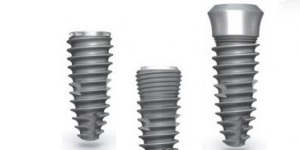
The use of implants
2015-09-06
چگونگی مدیریت بیماران مسن متقاضی ایمپلنت
2015-09-07The alveolar bone loss principally initiates with the tooth loss and this state may complicate the ideal placement of the implants. A number of surgical methods is advocated to prevent the bone loss. G. Pagni et al. reviewed these techniques in their study entitled “Postextraction alveolar ridge preservation in the molar area: biological basis and treatments”. The study provides comprehensive information about the socket healing and biology of the alveoloar bone resorption subsequent to extraction. They stated that the improvements in the grafting technologies would give rise to less invasive surgical interventions
The recent advances in the implant surface characteristics led to major modifications in former fundamentals. An increased osseointegration rate with the improvement of the surface characteristics of dental implants resulted in a numerous successful reports for the implants shorter than 10 mm. Today, many companies appear in the dental market with their recently introduced 6 mm or shorter dental implants. Owing to this, clinicians now can be able to offer effective and noninvasive remedies to their patients avoiding advanced complicated surgeries in case of severe alveolar atrophy. Although a number of clinical reports reveals high success rates for the mandible, the use of short implants in the maxilla is still debatable especially for the single-tooth replacements due to its porous nature. D. Lops et al. compared the clinical success rates for 8 mm. Implants with that of 10 mm. In their long-term study entitled “Short implants in partially edentulous maxillae and mandibles: a 10 to 20 years retrospective evaluation”. In general, they declared similar success rates for 8 mm and longer implants. The results of this study revealed that the use of 8 mm implants seems to be safe in the posterior maxilla






